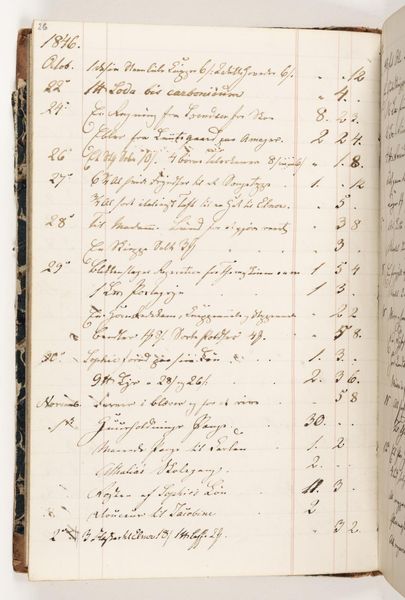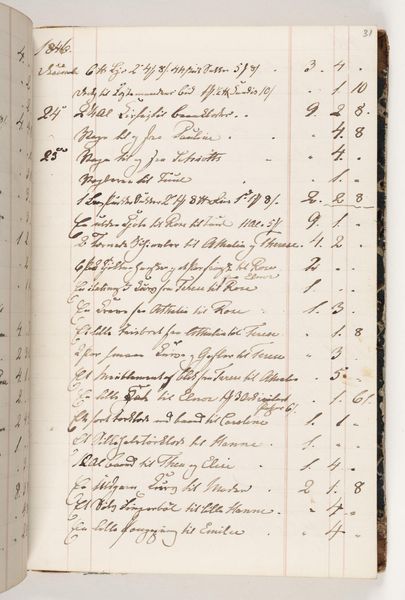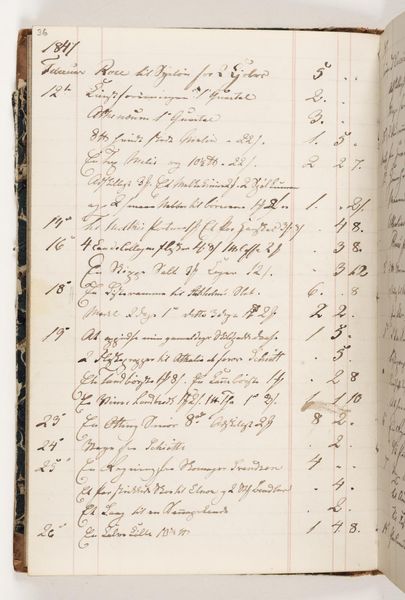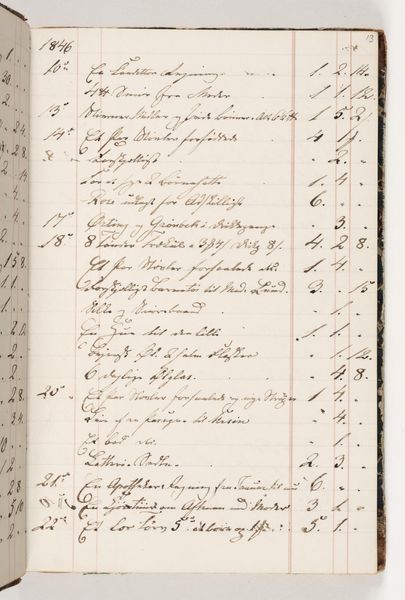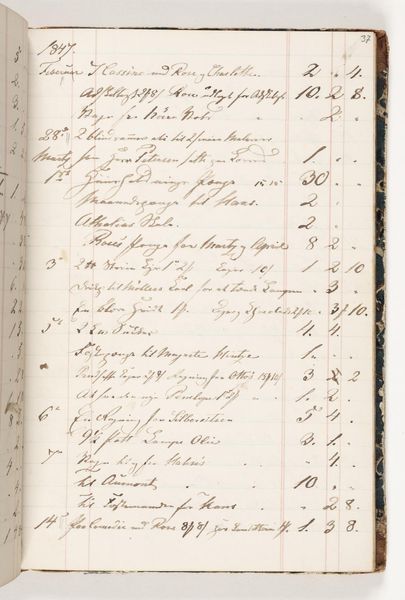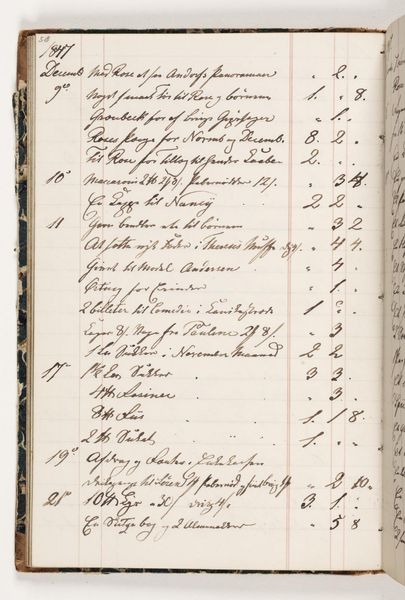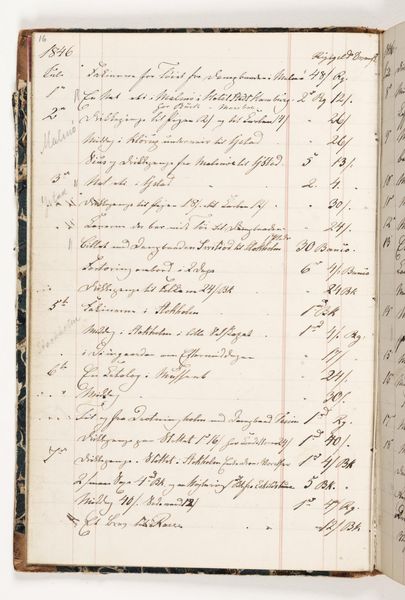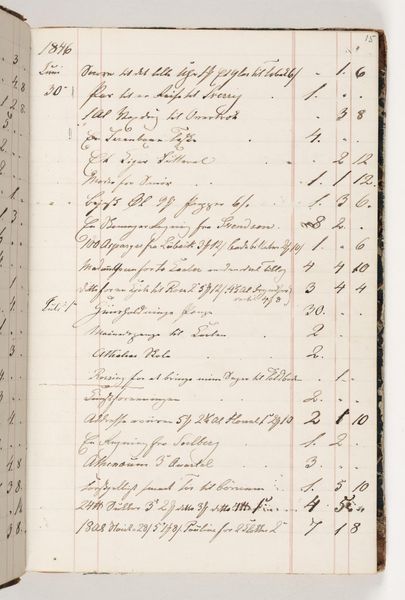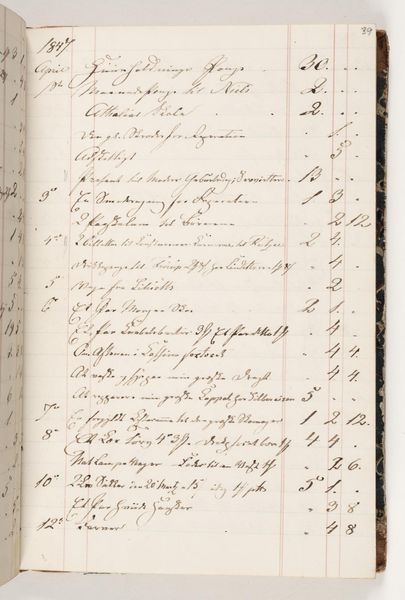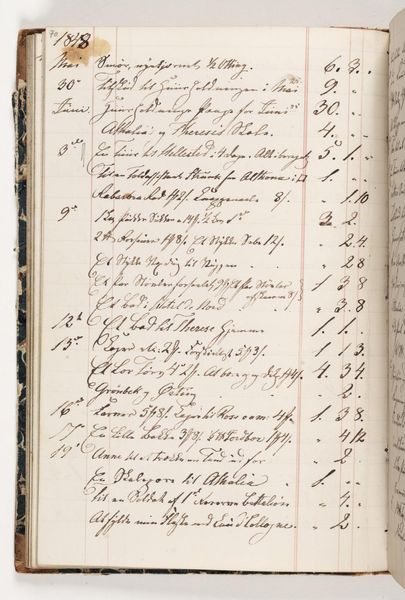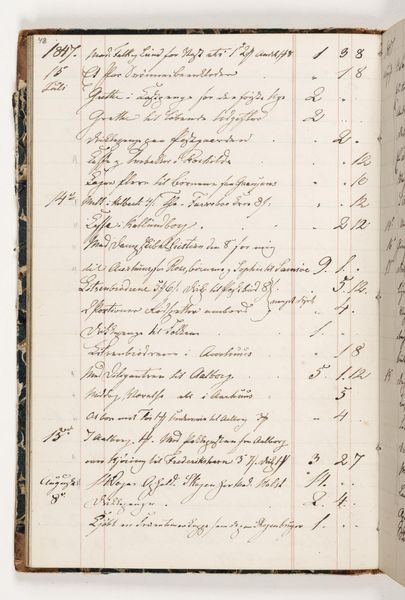
drawing, paper
#
drawing
#
paper
#
watercolor
Dimensions: 200 mm (height) x 130 mm (width) (bladmaal)
Curator: This work, titled "Regnskab 1847," is a drawing on paper, executed in watercolor by Martinus Rørbye. As the title suggests, it's dated 1847. What strikes you about this particular image? Editor: Immediately, I’m struck by the intimate, almost visceral sense of history here. The page has browned and aged so delicately and completely that its mood becomes tangible. It really emphasizes the physical presence of the document. Curator: The very act of accounting holds such social significance, doesn’t it? We see cultural values enshrined in these handwritten entries; notations concerning land, commerce and social practices from almost two centuries ago. These economic traces tell quiet stories of the community as well as individual experience. Editor: Precisely. It's not simply data; it's material history and material *labor*, from the pulp and rag that create this paper, to the production of inks used by Rørbye himself, to even the unseen workers who bound these documents together to preserve accounting records of landowners for time eternal. It is a testimony to long shifts and difficult work, but who was he accountable to when rendering his own expenses as art? Curator: The flow of ink across the page has a peculiar cadence, an almost meditative quality for something dealing with cold, hard numbers. Its artistic, ephemeral and even ghostly composition has made me re-think the emotional landscape for a period that felt, up until now, distant from my understanding. Editor: I think of the conditions necessary to even produce something like this – stable governance, relative prosperity to participate in material production... the image gestures at those things too, you know? We tend to assign dates and values, overlooking what actually made it all. Curator: So, you're emphasizing that its form tells us something distinct. Editor: The form and how its function are interlocked. Its physical presence suggests not only past economic circumstances, but hints also towards material resources involved in generating aesthetic sensibilities for generations onward. Curator: Absolutely, on consideration, this really complicates the way we understand a given period; economic systems not simply cold processes but emotional and social practices. Editor: Agreed. I never thought a seemingly drab page of calculations would generate such intriguing discussion about historical value!
Comments
No comments
Be the first to comment and join the conversation on the ultimate creative platform.


